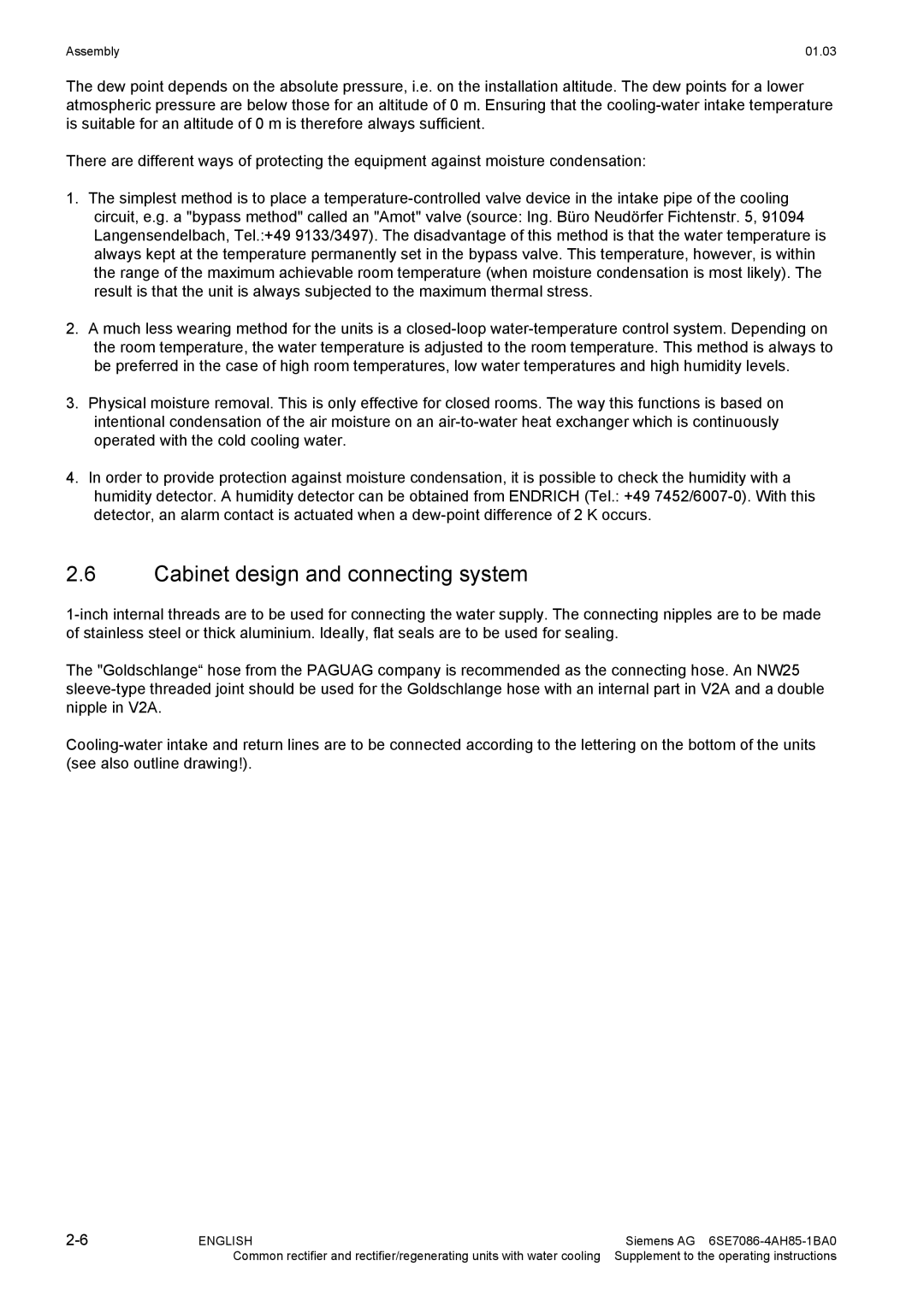The dew point depends on the absolute pressure, i.e. on the installation altitude. The dew points for a lower atmospheric pressure are below those for an altitude of 0 m. Ensuring that the cooling-water intake temperature is suitable for an altitude of 0 m is therefore always sufficient.
There are different ways of protecting the equipment against moisture condensation:
1.The simplest method is to place a temperature-controlled valve device in the intake pipe of the cooling circuit, e.g. a "bypass method" called an "Amot" valve (source: Ing. Büro Neudörfer Fichtenstr. 5, 91094 Langensendelbach, Tel.:+49 9133/3497). The disadvantage of this method is that the water temperature is always kept at the temperature permanently set in the bypass valve. This temperature, however, is within the range of the maximum achievable room temperature (when moisture condensation is most likely). The result is that the unit is always subjected to the maximum thermal stress.
2.A much less wearing method for the units is a closed-loop water-temperature control system. Depending on the room temperature, the water temperature is adjusted to the room temperature. This method is always to be preferred in the case of high room temperatures, low water temperatures and high humidity levels.
3.Physical moisture removal. This is only effective for closed rooms. The way this functions is based on intentional condensation of the air moisture on an air-to-water heat exchanger which is continuously operated with the cold cooling water.
4.In order to provide protection against moisture condensation, it is possible to check the humidity with a humidity detector. A humidity detector can be obtained from ENDRICH (Tel.: +49 7452/6007-0). With this detector, an alarm contact is actuated when a dew-point difference of 2 K occurs.
2.6Cabinet design and connecting system
1-inch internal threads are to be used for connecting the water supply. The connecting nipples are to be made of stainless steel or thick aluminium. Ideally, flat seals are to be used for sealing.
The "Goldschlange“ hose from the PAGUAG company is recommended as the connecting hose. An NW25 sleeve-type threaded joint should be used for the Goldschlange hose with an internal part in V2A and a double nipple in V2A.
Cooling-water intake and return lines are to be connected according to the lettering on the bottom of the units (see also outline drawing!).
